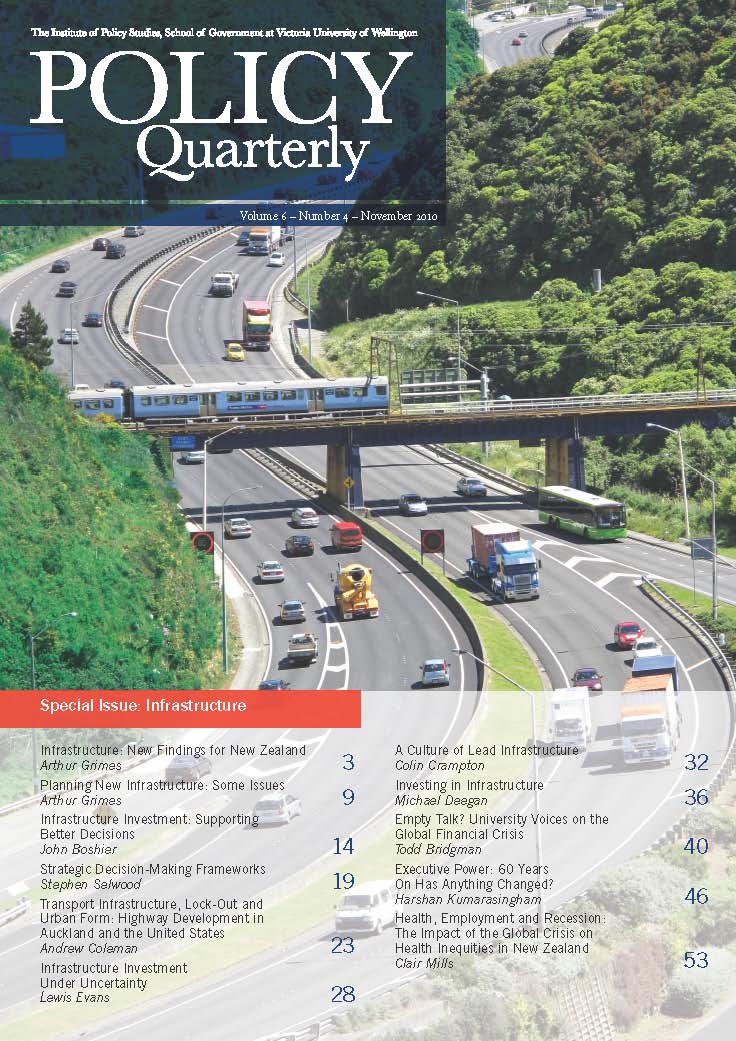Transport infrastructure, lock-out and urban form: highway development in Auckland and the United States
DOI:
https://doi.org/10.26686/pq.v6i4.4363Keywords:
population densities, transport infrastructure, cost-benefit analysis, high private transport costs, population dispersal, employment decentralisationAbstract
When travelling the world, it is impossible not to be struck by the different urban forms of the world’s great cities. Cities differ in size, age, shape and height. They have different housing styles and population densities. Some are concentrated around a mess of crooked streets, some are laid out around a planned grid, and some sprawl over wide areas. Many have a central waterfront, while others have ports several miles away. Cities also differ substantially in terms of their transport systems. There are walking cities, light railbased cities and subway cities. And there are also cities where public transport is little used, as most travelling occurs in private cars.
Downloads
Downloads
Published
Issue
Section
License
Permission: In the interest of promoting debate and wider dissemination, the IGPS encourages use of all or part of the articles appearing in PQ, where there is no element of commercial gain. Appropriate acknowledgement of both author and source should be made in all cases. Please direct requests for permission to reprint articles from this publication to Policy-Quarterly@vuw.ac.nz.



